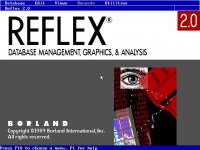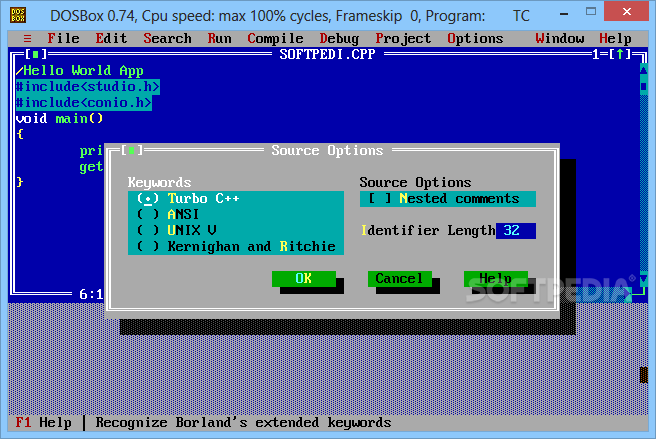

- #BORLAND C 3.1 FULL#
- #BORLAND C 3.1 ANDROID#
- #BORLAND C 3.1 CODE#
- #BORLAND C 3.1 WINDOWS#
Exclusive C++ debugging tools, including remote debugging for distributed development (COM and CORBA) multi-process and cross-process debugging with debug inspectors, dynamic watch windows, and debug tooltips. #BORLAND C 3.1 CODE#
New Code and Parameter completion, and the new ClassExplorer live structured class view and member creation wizards. #BORLAND C 3.1 WINDOWS#
Latest support for Windows 98, 95, and NT including multiple monitors, common controls, docking forms and toolbars, and more. 
#BORLAND C 3.1 FULL#
Support for the latest ANSI/ISO C++ language specifications, including a host of compiler enhancements including Dynamic Compilation and Adaptive Compiler Technology (ACT), which radically speed compiler build processes full ANSI/ISO template implementation full ANSI/ISO STL (standard template library) support and a high-performance 32-bit ANSI C++ native code compiler. New multi-standard flexible C++ compiler. Integrated Inprise Corporation's VisiBroker 3.3 with event and naming services. To align version number with Borland® Delphi®, version 2 was skipped. Original Borland C++Builder editions include Client/Server Suite, Professional, Standard. Retail version was released on February 26, 1997. The preview edition was announced in Jan. Traditionally, the release cycle was such that Delphi got major enhancements first, with C++Builder following, though recent versions have been released at the same time as their Delphi equivalents. The current version by Embarcadero supports cross-platform development using the new Firemonkey (FMX) library. Later versions incorporated Borland CLX, a cross-platform development visual component library based on Qt, that supports Windows and Linux, however CLX is now abandoned. History Borland C++Builder Ĭ++Builder originally targeted only the Microsoft Windows platform. The reverse (C++ code being used by Delphi) is not as straightforward but possible. The Delphi compiler emits C++ headers, allowing C++ code to link to Delphi classes and methods as though they were written in C++. Notable shared Delphi (Object Pascal code) and C++ Builder routines include the FastMM4 memory manager, which was developed as a community effort within the FastCode project, the entire UI framework known as the VCL, which is written in Object Pascal, as well as base system routines, many of which have been optimised for both Delphi and C++Builder through the FastCode project.Ĭ++Builder projects can include Delphi code. Since both Delphi and C++ use the same back end linker, the debugger can single step from Delphi code into C++ transparently.Ĭ++Builder includes tools that allow drag-and-drop visual development, making programming easier by incorporating a WYSIWYG graphical user interface builder.Ĭ++Builder uses the same IDE as Delphi, and shares many core libraries. With this approach, C++ can be called from Object Pascal and vice versa. Most components developed in Delphi can be used in C++Builder with no or little modification, although the reverse is not true, but this constraint is valid only for source code.īinary code generated by Delphi can easily be linked to binary code generated by C++Builder and vice versa to generate an executable written in both Object Pascal and C++. #BORLAND C 3.1 ANDROID#
Microsoft Windows, iOS, Android (32-bit) and previously macOSĬ++Builder is a rapid application development (RAD) environment, originally developed by Borland and as of 2009 owned by Embarcadero Technologies (a subsidiary of Idera), for writing programs in the C++ programming language currently targeting Windows (both IA-32 and 圆4), iOS and for several releases, macOS and Android (still supported, but only Android 32-bit apps.) C++Builder combines the Visual Component Library and IDE written in Object Pascal with multiple C++ compilers.






 0 kommentar(er)
0 kommentar(er)
